How to Score Sourdough
This post may contain affiliate links.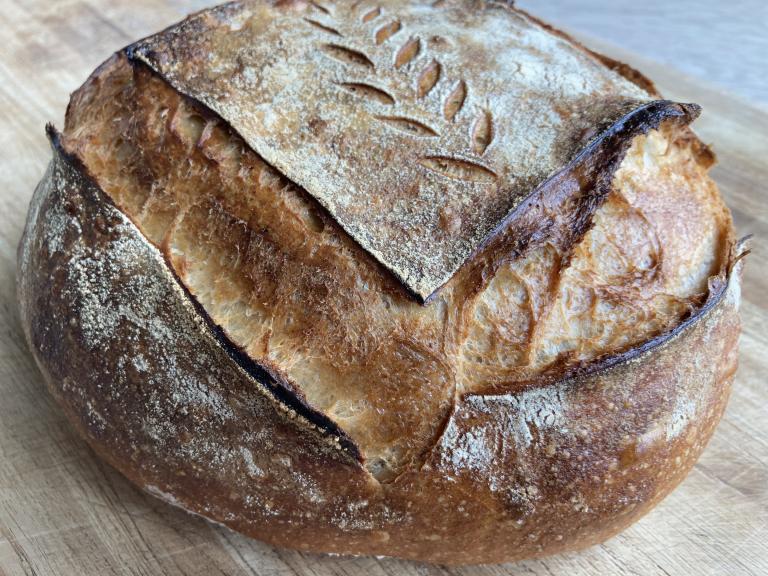
One of my favorite parts about sourdough is the scoring step. It’s where you can make your loaf unique and bring out the artist in you. I have had some beautifully scored loaves and some really horrible ones. Here are some of the tips and tricks I have learned along the way.
You may be surprised to know that scoring has a huge impact on how your dough expands. When your bread rises in the oven, scoring guides it to expand in a specific place. Expansion and tears occur in the weak points. The results of scoring can also guide you to change your recipe and methods. If you see tears in unexpected areas this usually means your hydration is too low, you didn’t proof long enough, or your crust set too quickly.
Steps to prep for a nice score
- Shaping your dough properly so that you have the right tension and reduce unwanted tears
- Clean sharp bread lame
- Properly proofed bread
Lower hydration is going to be easier to score, it will also provide more of an oven spring if that is something you desire for your loaf and score design. Lower hydration does have more tearing issues than higher hydration since the elasticity of the dough is less. Adding steam will help prevent your crust form forming too quickly and causing tears.
Tools for scoring sourdough
I use a bread lame and razor blade primarily for scoring. The bread lame is slightly curved and is the best tool of choice for the crescent score which produces a really great sourdough ear.
How to score a wheat stalk
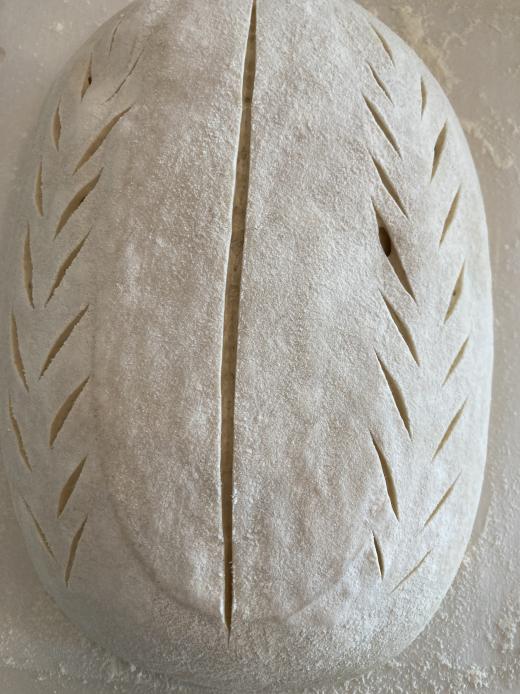 |
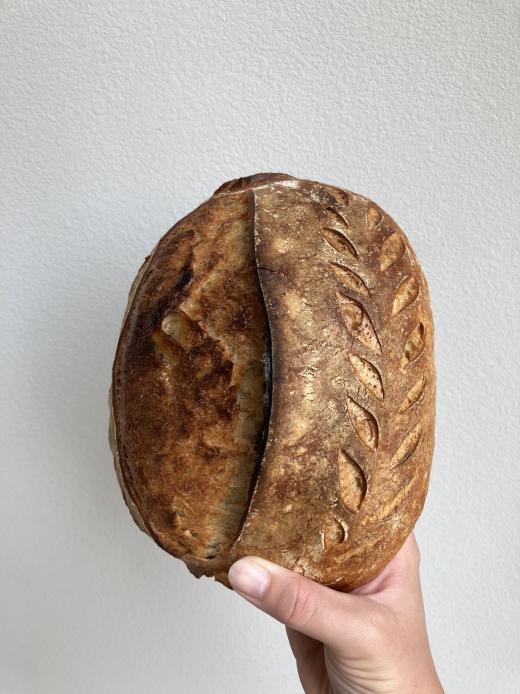 |
This took me an embarrissingly long time to get right and I see a lot of people make the same mistake. Do NOT draw a line for the stalk, just draw the leaves! Mindblowing I know. If you draw the line, it prevents the leaves from opening up properly. The expansion happens in the stalk instead of in the leaves, which is the opposite of what you want.
How to score and get a massive sourdough ear
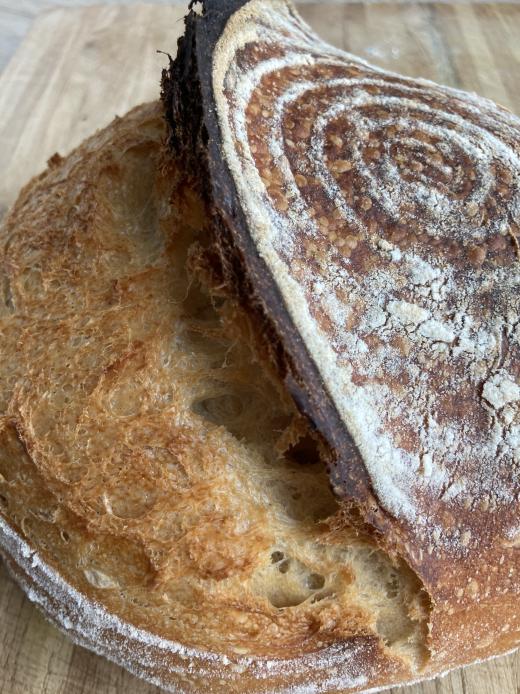
Hydration plays a large role in the size of your sourdough ear. Higher hydration loaves are flatter and do not have the same oven spring as lower hydration loaves. Not to say that you can’t get an ear with higher hydration is is just a bit harder and I find that 70% hydration provides the best ear. It has good oven spring which allows for that really large expansion of the ear.
Another factor is the level of proof. Slightly underproofed is going to get a larger ear than overproofed which can often deflate. If your goal is a large ear, then default to underproofed if you aren’t sure if you loaf is properly fermented.
Lastly, you will want to shape your dough into a boule with a crescent score. The crescent is important, you don’t want a slash down the middle. Use a bread lame or razor blade to perform a clean deep cut. It should be almost half an inch and follow the shape of your dough edge.
How to create designs with flour
You will often see the swirl flour design that is on boules or the stripes on bâtards. These lines are created by using a banneton without the liner.
If you want an intricate flour design without the lines, then use a banneton and liner. When you flip your dough out of the banneton, dust it with flour and then use your hand to disperse it evenly over the dough. Create your design and use short incisions.
It is crucial to avoid steam with this design. Do not use ice cubes or spritz with water. The flour with soak up the steam and you will lose your design.
I have stepped away from designing with flour because I think it is contrary to the best sourdough method. Steam is crucial to the crust and flavor of sourdough, so avoiding it seems undesirable. Also, a lot of people do not like the flour coating on the outside, it does make your sourdough crust taste chalky.
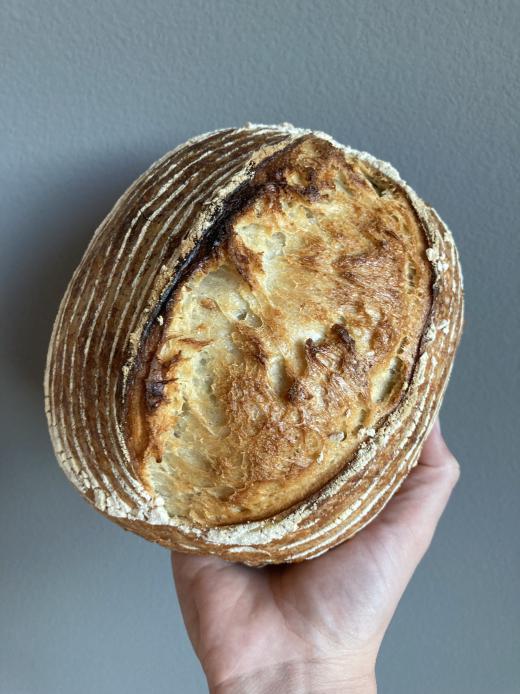
How far should the cuts be when scoring sourdough
Use a sharp bread lame or razor blade and perform clean and determined cuts without hesitation. Hesitation in sourdough is your enemy. Sourdough is about thinking ahead, confidence, understanding, and patience. If you use a dull blade, then not only will your scores be more difficult but you will sometimes get an opening that has this melted look. Also try to avoid going over your score too many times, your goal is one pass.
The cuts should range from about 1/8 an inch to 1/2 inch deep. The deeper score for where you want expansion and the shallow scores for more of a decorative design.
If you are doing a very intricate design then make sure it is well balanced over the loaf. Unbalanced scoring will pull at the crust as it expands in weak areas and disrupt your design.
My favorite score for a boule is a deep square score with a light cross inside. The deep score is almost 1/2 inch and the cross is barely 1/8 inch. I use a razor blade for both scores.
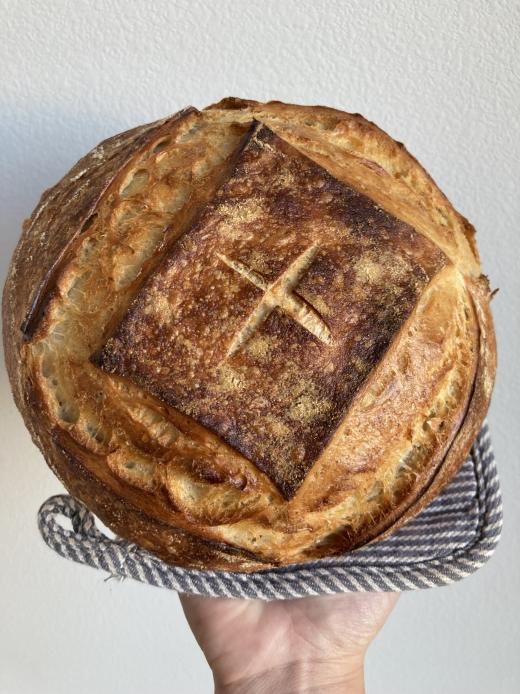
For a bâtard, I have be gradually transitioning to a middle slash. I have been focusing more on the bread itself and less on the decorative design as my sourdough journey progresses. I like how the middle slash exposes the beautiful inside of the dough. It also creates a nice little ear, is great at high hydration, and very limited tears because of the evenness of the slash. As the bread expands it does so naturally.
~Until next time my fellow sourdough lovers
More delicious sourdough recipes
This is one of the many fantastic sourdough recipes available on this blog
